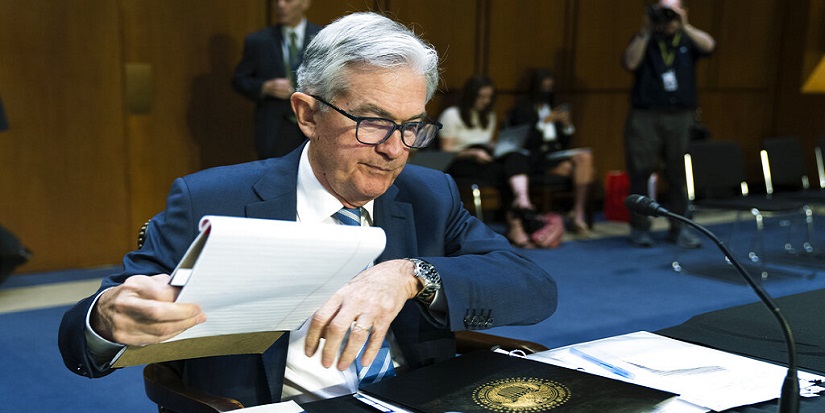
The Fed Is Actually Fixing Inequality, Unfortunately
-
 Jared Dillian
Jared Dillian
- |
- June 30, 2022
- |
- Comments
Last Thursday, Elizabeth Warren expressed skepticism about the Fed tightening monetary policy, saying it would make people poor. This is true. But I believe it will make rich people disproportionately poorer than poor people.
This debate has been happening for a while. It’s no secret that inequality has been widening rapidly in recent years. From 2008 to 2020, incomes for the bottom quintile rose 33.6%, while incomes for the top 5% rose 53.1%, according to Census Bureau data. The richest 1% of households increased their wealth by $4 trillion in 2020, capturing about 35% of the extra wealth created, while the bottom half got about 4% of wealth gains.
|
Start building real wealth NOW with Jared Dillian’s Strategic Portfolio. Take the stress out of investing—find out more by clicking here. |
Many Fed members (Minneapolis Fed President Neel Kashkari in particular) have said inflation actually helps low-income people, rather than hurting them. This seems counterintuitive because fuel and food make up a higher percentage of their expenses. So it would seem inflation hurts them the most. Then inflation ripped higher, irreparably harming average Americans, which is the opposite of what Kashkari predicted.
But the thinking is that interest rate hikes also hurt poor people because the economy slows, firms lay off workers, and people lose their jobs. People have argued that tighter monetary policy kills people, by leaving them unemployed and without hope. The counterargument is that looser monetary policy kills many more people. Inflation has increased the price of the food, plunging millions of people in the developing world into famine, as the US exports its monetary policy to the rest of the world. I will never back down from my assertion that, on balance, inflation is a much greater threat to humanity than deflation.
Everyone Has Less
If you are concerned about inequality, the gap in incomes and wealth between the rich and the poor, then surely you would favor tighter monetary policy. Tighter policy pushes asset prices down. This disproportionately hurts the rich because the rich typically own assets, and poor people have some cash in a bank account, which suddenly earns more interest.
Of course, that sequence of events hasn’t played out as planned, as the banks are awash in a glut of savings, suppressing interest rates on things like savings accounts and CDs. But if you look at this strictly from an inequality standpoint, inequality is arguably much improved from just six months ago. The poor are poorer, but the rich are much less rich.
Is anyone cheering on declining inequality when it results in everyone having less money? Well, some people are. If you care about these sorts of things, you would want to bring high incomes down and low incomes up. So, what sorts of policy prescriptions are there for bringing low incomes up? Is there some lever you can pull, some monetary policy button you can push to increase wages without causing inflation? We tried to do that for years, and we eventually got higher wages, but we also got lots of inflation.
What about on the fiscal side? We already have what is perhaps the most steeply progressive income tax in the developed world, with low- and middle-income people paying hardly anything in income taxes, and taxes on the wealthy that are not especially low. After years of the tax code getting more progressive, inequality got worse, not better.
No Easy Answer
The answer is that there is no easy answer, only hard answers. From a policy standpoint, you have to invest in things like improving education, which produces results over the long term. This isn’t meant to be an essay about education, but in many parts of the country, public education is unsatisfactory, and young people are doomed to a life of poverty by virtue of being born in the wrong geographic area. This is wrong, and we should fix it. But that’s a hard solution, one that requires a lot of deliberation, rather than simply nudging interest rates or tax rates up or down.
Supply-side economics will help out the bottom half—it will raise incomes across the board, but high incomes will go up more than low incomes, which some people find offensive. Through lower, flatter taxation, you can lift all boats, but not equally—which is the primary objection to supply side.
What we do know for certain is that long periods of negative real interest rates result in ballooning inequality, like we had until recently. Conservatives in finance and hard money advocates have pointed this out for years, but it’s fallen on deaf ears. If the Fed were to raise real interest rates to 2%, you would see inequality fall to 1950’s levels. Our standard of living probably would too, so maybe a little inequality isn’t a bad thing.
The central banker desire to keep interest rates low to help out the “little guy” goes all the way back to the days of G. William Miller, and maybe before that. At any rate, inequality shouldn’t factor into the Fed’s thinking at all. Protect the purchasing power of the currency, maintain full employment—those are its two mandates. That’s it. There’s some talk about the Fed trying to achieve other social goals, which almost always results in lower rates and more inflation. The goal is for prosperity to be shared as equally as possible, and that can be achieved through positive real interest rates.

Jared Dillian
subscribers@mauldineconomics.com

 Jared Dillian
Jared Dillian